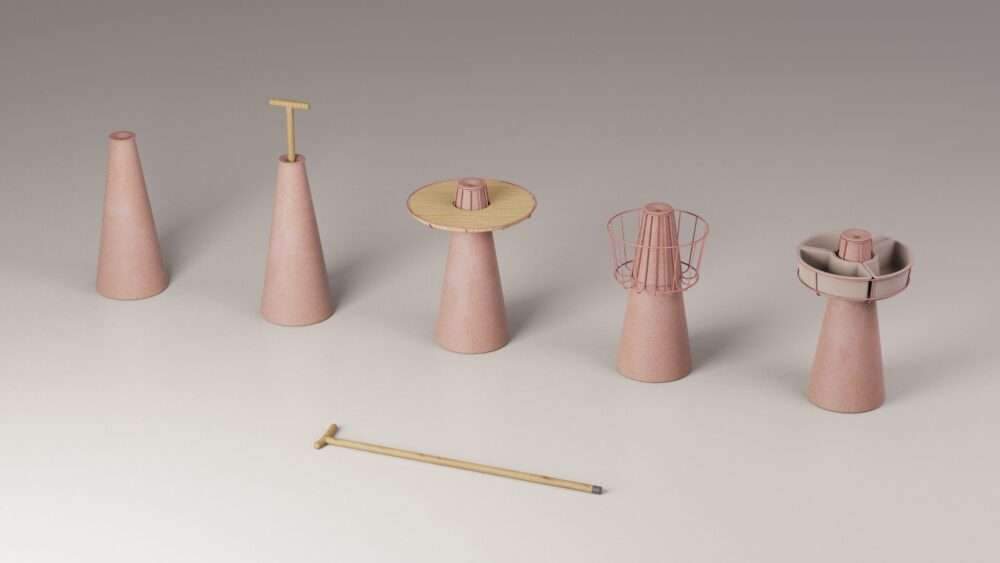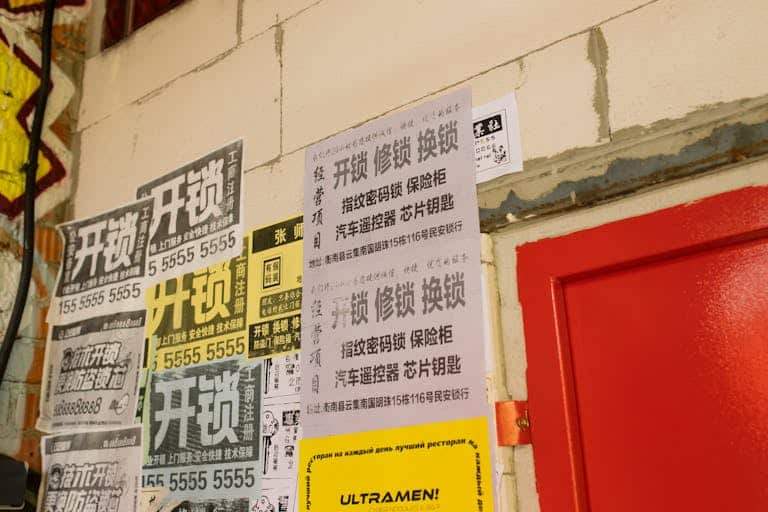How IKEA Redefined Interior Design and Modern Architecture
Introduction: IKEA as a Design Phenomenon
IKEA is far more than a global furniture retailer. Over the decades, it has quietly reshaped the way people think about space, objects, and living. With its flat-pack furniture, minimalist aesthetic, and mass affordability, IKEA has brought design into the everyday lives of millions. But beyond its commercial success, the company represents a unique intersection of architecture, interior design, material innovation, and social values. It has made good design not only accessible, but participatory, allowing users to become co-designers of their environments. As we explore IKEA’s global influence, it becomes clear that its impact extends far beyond the showroom floor — into urban housing, cultural behavior, sustainability, and even education.
IKEA and the Foundations of Modern Architecture
IKEA’s design ethos is closely aligned with the principles of modern architecture. The emphasis on clean lines, open spaces, and minimal ornamentation mirrors the aesthetics of the Bauhaus and the International Style. These movements emphasized the importance of function over decoration — a principle IKEA has internalized and repackaged for the mass market. Just like modernist architects sought to strip buildings down to their essence, IKEA’s products are stripped of excess, offering distilled forms that prioritize utility and clarity.
But it’s not only about appearance. IKEA also embodies architectural logic in its approach to spatial organization. The company’s use of modular systems and scalable components reflects a mindset rooted in architectural thinking. Much like architects consider flow and functionality in building layouts, IKEA designs furniture that helps users navigate space efficiently, often in compact living environments. It’s this convergence of design, logic, and democratization that allows IKEA to function as an architectural brand — even when it’s only selling lamps or chairs.
Bauhaus Ideals in IKEA’s DNA
The legacy of Bauhaus runs deep in IKEA’s DNA. At the core of both is the belief that design should be functional, beautiful, and accessible to all. The Bauhaus movement rejected decorative excess and advocated for industrial production as a way to bring high-quality design to the masses. IKEA carries this torch by offering affordable, streamlined products produced on a global industrial scale. But unlike the often exclusive or conceptual outputs of high design, IKEA distills these ideas into items that people can not only afford, but assemble themselves at home.
Moreover, IKEA serves as an informal educational platform, just as the Bauhaus school once aimed to train a new kind of designer. Its showrooms are immersive learning environments. Visitors don’t simply browse products; they experience curated interiors that demonstrate how design principles work in real life — how light hits a surface, how spatial proportions feel, how storage can be optimized. This makes IKEA a kind of decentralized design school, teaching the public how to think like designers through direct interaction and everyday problem-solving.

Wood, IKEA, and the Modular Turn in Architecture
Wood plays a central role in IKEA’s material palette — not just for aesthetic reasons, but for its flexibility, affordability, and sustainability. The company is one of the world’s largest consumers of wood, and has invested heavily in engineered wood products such as MDF, particleboard, and laminated veneer lumber. These materials allow IKEA to standardize production, minimize waste, and design modular systems that can be scaled and replicated across global markets.
In architecture, modularity and prefabrication have long been explored as ways to solve housing shortages and reduce construction costs. IKEA’s ventures into housing, such as the BoKlok project developed in collaboration with Skanska, reflect this thinking. These wooden homes are factory-built, easily assembled, and targeted at working-class families — bringing architectural modularity into the realm of real estate. IKEA’s furniture, then, becomes more than a product; it becomes a building block for reimagining how we inhabit space at every scale.
Interior Design, IKEA, and Spatial Storytelling
Every IKEA store is designed as a narrative journey. Visitors follow a curated path through a sequence of spaces that simulate different living conditions — small apartments, family homes, student rooms. These environments are not just product displays; they’re carefully crafted vignettes that tell stories about lifestyles, needs, and possibilities. Through these staged interiors, IKEA doesn’t just sell furniture — it sells ways of living.
This form of spatial storytelling is deeply architectural. It teaches users how to think about zoning, circulation, light, and spatial rhythm. IKEA shows how a studio apartment can be divided into separate functions — sleeping, eating, working — using nothing more than furniture, textiles, and clever layout. This empowers users to see their own homes as transformable environments, and positions interior design as an accessible, everyday practice rather than an elite profession.
IKEA as a Catalyst for Creative Constraint
One of IKEA’s most underestimated contributions to design culture is the idea of creative constraint. Because its products are modular, affordable, and easy to modify, they invite users to experiment. Online platforms like IKEA Hackers document thousands of ways that consumers have reinterpreted standard items — turning shelves into standing desks, beds into storage units, or kitchen items into lighting fixtures.
This phenomenon speaks to a wider shift in design from passive consumption to active participation. IKEA’s products become tools for problem-solving and self-expression. Much like architectural students use prefabricated parts to prototype ideas, everyday users are encouraged to engage with design principles through play and adaptation. In this way, IKEA fosters a do-it-yourself culture that overlaps with the spirit of the Bauhaus — empowering individuals to take design into their own hands.

Urbanism and Micro-Living: IKEA’s Response to City Life
As cities become denser and housing becomes more constrained, IKEA has adapted its design strategies to accommodate the realities of urban living. Many of its products are specifically designed for small spaces — foldable tables, stackable chairs, under-bed storage — allowing maximum utility in minimal square footage. This aligns with architectural concerns around density, affordability, and spatial optimization.
Beyond furniture, IKEA has also engaged with urbanism more directly. Through pilot projects and collaborations, the company has explored concepts like student micro-housing, pop-up container homes, and temporary refugee shelters. These ventures reflect a growing recognition that the future of design lies not only in individual products, but in holistic spatial solutions that respond to broader social and environmental pressures.
IKEA and the Psychology of Space
IKEA’s influence extends beyond form and function into the psychological dimensions of space. The brand is known for creating environments that evoke calmness, clarity, and comfort. Neutral color palettes, soft lighting, and natural materials are all carefully curated to create an emotional resonance with users. This approach taps into psychological research on how space affects mood, productivity, and well-being.
Such attention to the emotional impact of design has helped IKEA set a standard for emotionally intelligent interiors. These are not just places to sit or sleep, but environments that support mental health and social connection. In this way, IKEA integrates principles from environmental psychology into its design language, subtly influencing how people feel in their spaces.
Accessibility, Neutrality, and Gender-Inclusive Design
Another aspect of IKEA’s design philosophy is its commitment to accessibility. Its furniture is designed to be usable by a wide range of people regardless of physical ability, design knowledge, or income level. Instructions rely on visuals rather than text, and products are engineered for easy assembly and handling. This ethos of universal design makes IKEA one of the few global brands that truly designs for all.
Moreover, IKEA’s aesthetic is deliberately neutral. Rather than enforcing a specific cultural or gendered identity, its designs are adaptable canvases. This allows them to fit into diverse lifestyles and cultures. Whether it’s a minimalist flat in Tokyo or a family home in Barcelona, IKEA’s products become localized not through design itself, but through use and personalization.

Digital Architecture: IKEA’s Leap into the Virtual World
As digital tools redefine how architecture is visualized and experienced, IKEA has moved into this space with surprising agility. From augmented reality (AR) apps that let users preview furniture in their homes to AI-generated room designs, the brand is leveraging digital tools to bridge the gap between imagination and reality. These platforms offer users a way to “try before they buy,” but also to simulate and test spatial arrangements before committing to physical change.
This merging of digital and spatial experience places IKEA at the forefront of virtual architecture. It shows that furniture and interiors are no longer static; they are dynamic, programmable environments that evolve with user needs and technological possibilities.
Sustainability and Ethical Material Use
In recent years, IKEA has made sustainability a central pillar of its mission. The company has committed to becoming climate-positive by 2030, focusing on renewable materials, energy efficiency, and circular design. Many of its newer products are designed to be disassembled and recycled at end-of-life, reflecting a shift toward a more ethical approach to production and consumption.
This sustainability ethos is not just marketing — it has architectural implications. It challenges designers and builders to consider lifecycle impacts, material sourcing, and long-term adaptability. IKEA’s leadership in this area sets a precedent for the entire industry, demonstrating that mass production and environmental responsibility can coexist.
Conclusion: A Global Design Infrastructure
IKEA has become more than a retailer. It is a global design infrastructure that influences how people build, furnish, and experience space. Its impact spans disciplines — architecture, interior design, sustainability, psychology, and digital innovation. By turning complex design ideas into everyday realities, IKEA has helped to blur the line between professional and personal creativity. It is not simply a brand we consume — it is a framework through which we build our lives.
As architecture continues to evolve in response to urbanization, climate change, and social transformation, IKEA remains a key player in shaping how we think about space: simple, human-centered, adaptable. Whether through a chair, a catalog, or a modular housing project, IKEA continues to design not just for the present, but for the possibilities of tomorrow.

For anyone looking for a reliable and up-to-date architectural resource, ArchUp offers fresh content covering projects, design, and competitions.
More on ArchUp:







